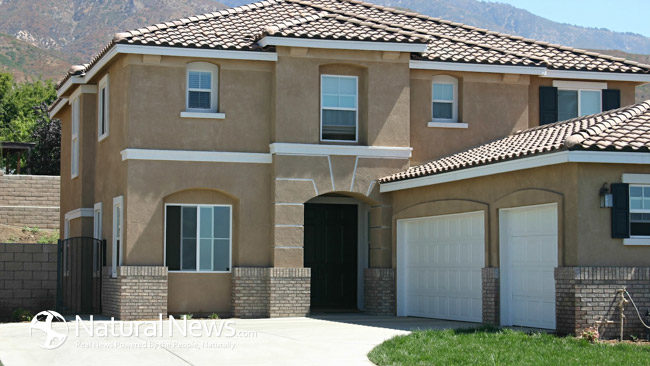Believe it or not, it’s easier than you might think to conserve energy and save money on utility costs while helping the environment, if you are a home owner. First, check off the basic task of replacing incandescent light bulbs with LED light bulbs. Second, you’ll want to prevent as much water wastage as possible by fixing any leaky toilets on the property—and, if you can, replace current shower heads with water-efficient shower heads. Next, if you have more time, here’s a list of specific green maintenance tasks you can work toward: it includes sealing and insulating walls, ceilings, and windows; insulating your water heater; and sealing air ducts to prevent warm air from dissipating through leaks in the ducts.
When considering ways to conserve water, however, we often forget about the role of landscaping. However, drought is becoming more of a problem every year, it seems, in many areas around the country—as you can see with this Drought Monitor from the National Drought Mitigation Center. In order to both save money on your water bill and help to alleviate your impact on current drought conditions, seek out a local nursery that sells native, low-water plants. If you can put in some sustainable ground cover, such as dwarf thyme or sedum, the low-water perennial will both save you money on watering and beautify the grounds around your property.
Consider implementing rocks into your landscape, as well. A totally desert-friendly style—as you may already know—is called a xeriscape. This type of landscape requires little-to-no irrigation, and includes styles made up entirely of rocks, boulders, and gravel. However, it’s not necessary to go to such an extreme in order to conserve a great deal of water. You’d be surprised at how many plants are able to thrive in quite arid conditions! The City of Scottsdale, in Arizona, has an excellent resource guide to xeriscaping that I came across in my research on this topic, and I encourage you to seek out local resources in your own area in your search for suitable trees, plants, and groundcover to plant on your property.
One last approach that’s gaining in popularity is the edible landscape—that is, selecting plants based on their nutritional qualities or their ability to be utilized for medicinal purposes. Of course, with a front yard, there’d probably have to be a contained, fenced-in area in order for this option to be practical. This would also be contingent upon your area’s climate, how upkeep is handled, and which vegetables or herbs are chosen. Regardless of whether you decide to install a small, low-maintenance garden patch or a larger, more extensive selection of edible plants, you’ll still save money on your water bill because grass is notoriously water-thirsty. Also, you’ll save money on groceries by growing part of what you eat, each week!
Depending on your relationship with your neighbors, there are plenty of garden options for back and even front yards. You might even consider starting a ‘Victory Garden’—a concept that came about during World War II and that has experienced resurgence in popularity in recent years due to economic instability in the U.S., as well as a return to back-to-the-land and ‘Buy Local’ economy movements.
In conclusion, go forth and get thee to a nursery! It will be fun, you will likely learn quite a bit about your local ecosystem and native plants, and you will save money, in the long run. And who could argue with that?
Bio: Rodrick Johnson enjoys bouldering, snow-shoeing, and supporting his local CSAs while constantly learning new ways to cook with seasonally-available produce, in the process.





